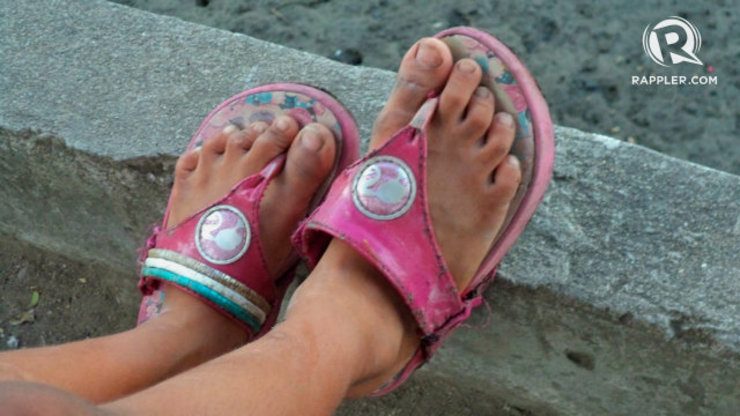SUMMARY
This is AI generated summarization, which may have errors. For context, always refer to the full article.

MANILA, Philippines – Over a hundred street children have been “rescued” since Monday, November 10, a week before the Asia Pacific Economic Cooperation (APEC) summit, according to the Manila city government.
The city government, however, denied that the “rescue operations” were done in time for the international summit to be held from November 17 to 19.
“Oo, nag-start kami ng rescue operation nang Monday. Pero ‘di lang ‘yan dahil sa APEC, matagal na namin ginagawa ‘yan. Pero ngayon lang napansin ng mga kasamahan natin na mamamahayag,” Bambi Purisima of Manila’s public information office told Rappler on Wednesday, October 11.
(Yes, we started a rescue operation on Monday. But that’s not just because of APEC, we’ve been doing it for a long time. But it’s only noticed now by the media.)
According to Purisima, 141 kids have been taken off the streets since Monday, but added that such operations are done on a near-daily basis.
He said the children are fed, bathed, and given medical care at the Manila Reception and Action Center (RAC), a government-run shelter for street children.
The facility made headlines late last year after a photo of a severely malnourished child went viral, pushing advocates to question how RAC treats children. This led to a Senate inquiry and the center’s temporary shutdown. (READ: Finding Frederico)
Those from outside Manila are then turned over to the Jose Fabella Center in Mandaluyong, while Manila residents are taken to the Manila Boys Town Complex in Marikina.
Some children are returned to their families if social workers deem their parents capable.
‘Huli vs rescue’
“It’s not true that they’re doing that regularly. We haven’t had rescues like this in a while,” said Catherine Scerri, deputy director of Bahay Tuluyan, a non-governmental organization championing children’s rights.
She pointed out that the “clearing operations” are done specifically for the APEC.
Earlier this year, Bahay Tuluyan accused the Department of Social Welfare and Development (DSWD) of hiding street families during the papal visit. The DSWD then explained that street families were brought to a Batangas resort as part of the Modified Conditional Cash Transfer (MCCT) program.
The same thing, critics alleged, is happening all over again.
Ahead of the summit, the DSWD issued statements clarifying that they have no planto hide the homeless.
But Scerri said her group spoke to some street families who said they will be attending an MCCT camp on November 17. This claim has been denied by the DSWD National Capital Region office, stressing that there are no scheduled out-of-town activities for street families during the APEC.
Scerri added that they have received reports from street families and children from Malate, Hospital of Manila, Roxas Boulevard, and Binondo who felt they “were not given a choice” in the rescue operations.
“They definitely feel they are being forced off the street. The people feel they can’t stay where they are,” she continued. She called the move “counterproductive” to the longterm goal of getting people off the streets since the operations cause distrust and trauma among street families, especially the children.
For Scerri, some might feel that their basic freedom is being infringed. She added that the same thing happened in 1996, when the Philippines first hosted the APEC summit.
“When we asked children, they translate rescue to huli (arrest). They do not feel they’re being taken away from danger, they feel they’re being caught. They feel they’re being punished and they don’t know why,” she explained.
Scerri calls on the government to respect children’s rights and to implement policies properly.
But the Manila government countered by saying that the operations aim to keep children safe. The streets can be a dangerous place, Purisima argued, and children are merely being saved.
“It’s not by force. Mayor Erap Estrada ordered to rescue [children] not just because of the APEC. The Mayor is doing this for the welfare of Manila citizens,” Purisma said. – Rappler.com
Add a comment
How does this make you feel?
There are no comments yet. Add your comment to start the conversation.